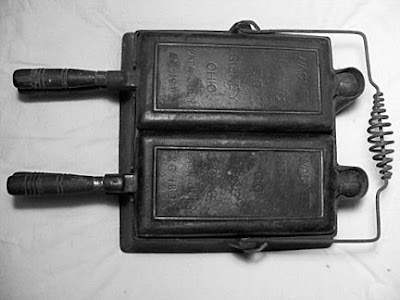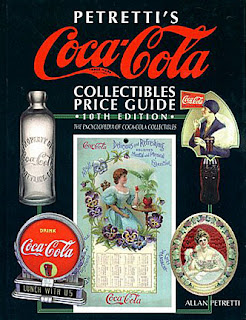QUESTION: One of the happiest memories I have from when I was a kid were the Sundays spent at the local Waffle House. My dad took Mom and us kids there after church on most Sundays. If I close my eyes, I can still smell their delicious aroma, smothered in melted butter and warm maple syrup. It’s been a while since I visited a Waffle House—there aren’t too many around anymore. Today, I use a shiny stainless steel and chrome electric waffle iron when I want to indulge. But it’s just not the same. Recently, as I was browsing through an antique coop. I noticed a pile of old, neglected waffle irons. Now I’d like to know more about them. When did the waffle originate? Who invented the first waffle iron? Who came up with the idea to electrify them?
ANSWER: Reading about your waffle memories makes me want to go make one. To me, waffles have always been a treat, especially if smothered in fresh strawberries, syrup, and whipped cream.
 The origin of waffles is highly debated. Some historians believe the earliest waffle irons originated in the Netherlands in the 14th century. These consisted of two hinged iron plates connected to two long, wooden handles. The plates often imprinted elaborate patterns on the waffle, including coat of arms, landscapes, or religious symbols. The waffles would then be baked over the hearth fire. Though blacksmiths made waffle irons back then, historians are unsure whether they or their customers created the designs imprinted on the waffles.
The origin of waffles is highly debated. Some historians believe the earliest waffle irons originated in the Netherlands in the 14th century. These consisted of two hinged iron plates connected to two long, wooden handles. The plates often imprinted elaborate patterns on the waffle, including coat of arms, landscapes, or religious symbols. The waffles would then be baked over the hearth fire. Though blacksmiths made waffle irons back then, historians are unsure whether they or their customers created the designs imprinted on the waffles.
 In fact, waffles can be traced back to ancient Greece, when Athenians cooked obelios—flat cakes between two metal plate—over burning embers. The word waffle evolved from wafer, one of the only foods early Catholics could eat during fasting periods because they contained no milk, eggs, or animal fats. Monks were the only ones making these wafers until the late 12th century, when peasant bakers began making their own flour and water waffles, although some started adding eggs and honey to make them lighter and sweeter.
In fact, waffles can be traced back to ancient Greece, when Athenians cooked obelios—flat cakes between two metal plate—over burning embers. The word waffle evolved from wafer, one of the only foods early Catholics could eat during fasting periods because they contained no milk, eggs, or animal fats. Monks were the only ones making these wafers until the late 12th century, when peasant bakers began making their own flour and water waffles, although some started adding eggs and honey to make them lighter and sweeter.
Eventually, waffle iron makers molded the plates with religious symbols and the familiar honeycomb pattern, which was supposed to represent interlocking crosses. In 1270, bakers founded a special guild to train the street vendors who sold waffles.
 To use a traditional waffle iron, a baker poured batter between the plates then held it over a wood fire to bake the batter poured between them, one side at a time. Knowing when to turn the iron took skill learned by trial and error since these early waffle irons had no temperature controls.
To use a traditional waffle iron, a baker poured batter between the plates then held it over a wood fire to bake the batter poured between them, one side at a time. Knowing when to turn the iron took skill learned by trial and error since these early waffle irons had no temperature controls.
The Pilgrims discovered waffles while seeking asylum in Holland before sailing to America and brought them across the Atlantic in 1620. Later, Dutch immigrants popularized the waffle in New Amsterdam.
But the waffle wouldn’t achieve nationwide appeal in America until Thomas Jefferson brought a waffle iron back from France in the 1790s as a souvenir. He had his cook make and serve them at the White House, which helped popularize "waffle parties."
 It wasn’t until 1869 that Cornelius Swarthout patented the first waffle iron in the U.S.. What made his waffle iron unique was that he joined the cast iron plates by a hinge that swiveled in a cast-iron collar.
It wasn’t until 1869 that Cornelius Swarthout patented the first waffle iron in the U.S.. What made his waffle iron unique was that he joined the cast iron plates by a hinge that swiveled in a cast-iron collar.
Soon after the invention of electricity came the electric waffle iron. Lucas D. Sneeringer eventually designed the first electric heating elements that used a built-in thermostat to prevent overheating, a common pro with early versions. With his revolutionary design and General Electric funding, the first electric waffle iron rolled off the assembly line on July 26, 1911.
 While the first electric waffle iron did the job—the process of making waffles this way is a relatively simple one—it didn’t look very pretty. So designers began to make the exterior of their waffle irons more attractive. Other innovations, like an iron that could cook two waffles at the same time, soon followed. Charles M. Cole invented the first twin waffle iron in 1926, but it wasn’t until 1939 when Karl Ratliff designed the "Twin-O-Matic" for the New York World's fair that it really caught on with the public.
While the first electric waffle iron did the job—the process of making waffles this way is a relatively simple one—it didn’t look very pretty. So designers began to make the exterior of their waffle irons more attractive. Other innovations, like an iron that could cook two waffles at the same time, soon followed. Charles M. Cole invented the first twin waffle iron in 1926, but it wasn’t until 1939 when Karl Ratliff designed the "Twin-O-Matic" for the New York World's fair that it really caught on with the public.
 By the time the New York World’s Fair rolled around, Art Deco design had influenced everything from dishes to utensils and small appliances. Some waffle irons, like the Hotpoint Waffle Iron by Edison General Electric, became works of art in themselves. Some resembled flying saucers, having lost their legs and taking on a lower, sleeker look. One of these was General Electric’s Diana, designed by August Propernick. Toastmaster and Sunbeam soon got in on the act and began producing their own electric waffle irons.
By the time the New York World’s Fair rolled around, Art Deco design had influenced everything from dishes to utensils and small appliances. Some waffle irons, like the Hotpoint Waffle Iron by Edison General Electric, became works of art in themselves. Some resembled flying saucers, having lost their legs and taking on a lower, sleeker look. One of these was General Electric’s Diana, designed by August Propernick. Toastmaster and Sunbeam soon got in on the act and began producing their own electric waffle irons.
 Because of the "teeth and gaps" of the waffle mold or "iron", considerably more of the surface area is heated and caramelized relative to the "pancake" -- thus, the waffle has more taste and a crispness that enables it to serve as a support for other foods. Even though the waffle makers have changed over the centuries, the basic waffle recipe----a blend of flour, milk, eggs, and oil—hasn’t. In the mid-1930s, brothers Frank, Tony and Sam Dorsa created a dry waffle batter that only required users to add milk.
Because of the "teeth and gaps" of the waffle mold or "iron", considerably more of the surface area is heated and caramelized relative to the "pancake" -- thus, the waffle has more taste and a crispness that enables it to serve as a support for other foods. Even though the waffle makers have changed over the centuries, the basic waffle recipe----a blend of flour, milk, eggs, and oil—hasn’t. In the mid-1930s, brothers Frank, Tony and Sam Dorsa created a dry waffle batter that only required users to add milk.
To read more articles on antiques, please visit the Antiques Articles section of my Web site. And to stay up to the minute on antiques and collectibles, please join the over 30,000 readers by following my free online magazine, #TheAntiquesAlmanac. Learn more about the "Pottery Through the Ages" in the 2022 Winter Edition, online now. And to read daily posts about unique objects from the past and their histories, like the #Antiques and More Collection on Facebook.














































